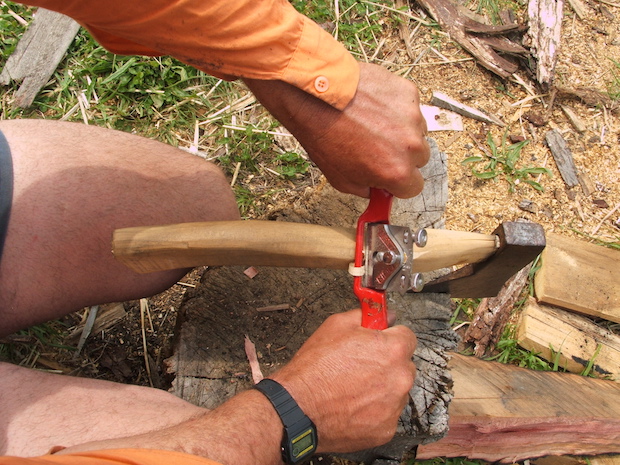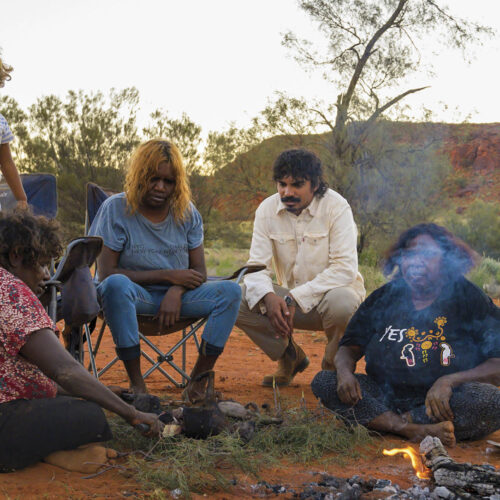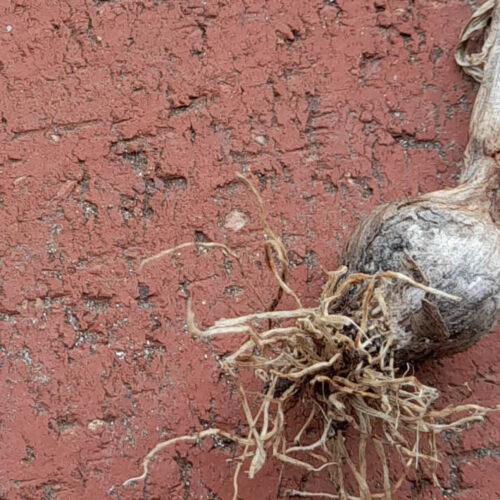The Tassie Tales
2018-02-15T06:25:53+11:00
Linda Cockburn cheers as the house plans are approved – but then the goat gets through the garden fence. (First published in 2004, and republished as part of our 100th issue.)
With my partner Trevor and son Caleb, I’ve now been in Tassie for a year, and I’ve not so much as raised a sweat once, regardless of how energetic I’ve been. This, after years of raising a sweat while engaged in the act of breathing (living in the sub-tropics), has been worthy of celebration in itself.
We now have a small orchard, tunnel greenhouse (complete with resident mandarin, which seems to be enjoying the heat). We have goats, along with their milk, cheese and yoghurt, and chooks with all their wonders – their eggs, their ability to eat weeds and weed seeds, and to poop attractive amounts of phosphorus and nitrogen. We have an abode, of sorts. Trev’s been busy erecting yet more fencing and finding interesting things to do with mill waste.
We’ve had our ups – the birth of our book, Living the Good Life – and our downs, most of which are related to attacks on the garden by late frosts, snows, and destructive winds, which have spawned a new mulching material: bricks. Oh, and a small goat named Annabella, who last week worked out that if she was very clever she could leap and push her way between the two top wires surrounding the garden and wreak havoc on her own. Hence many yams stranded top side, peas without greens, onions without stems, flowers without heads, legless raspberry canes with nothing left to lean on, and many small fruit trees without leaves. This was discovered at exactly the same time as
I was seen running around the garden carrying a brick (I hadn’t had much luck with small stones, and it was the only throwable object left), trying to lob it at a chook who had just dismantled as many potato plants as it could in its ‘hunt the baby potato’ race. I threw the brick, missed, and the chook won.
Still, our experiments with a temperate climate have gone well. We’re still in that honeymoon phase of looking around us, sighing deeply and murmuring sweet nothings at the glorious views. Trev has taken up sailing and is often seen aboard a yacht (wind powered) while our son Caleb is either fishing, socialising, jumping on the trampoline or jumping off the end of a wharf – accidentally. He thinks he runs faster if he watches his feet and didn’t notice where the wharf ended and the sea began…
Caleb’s also using increasingly ingenious methods of removing peas from pods or playing with the baby chickens. And me, when I’m not at work I’m in the garden or coaxing honey from whichever end of bees you coax honey from. We’ve even gone so far as to buy less than tip-top, tip shop bikes and are doing some repairs prior to boarding bicycles once more. Going down the path of sustainability has lots of twists and turns and the challenges are no less here in Tassie as they were in Gympie.
But the big news is that what we’d been bating our breaths for for nearly a year – the house plans – are now out of Council and in an approved form! Trevor may look wistfully back on his pottering days. We’ve stuck the plans up on the shed wall for easy reference as we begin the next big phase on the next adventure.

Getting a handle – Trev fixes a hatchet
I’ve discovered a new use for firewood. I’ve been using it to chop firewood. Let me explain. We use waste from the local mill – flitches, off cuts, reject lengths, etc – as fuel for our slow combustion, wetback stove. But with some careful salvaging, there are also plenty of pieces that can be used in various projects around the place, such as the goat palace, the kitchen bench and doors for the hothouse, to name just a few. And I’ve recently discovered it makes a good replacement handle for the little hatchet I use to split kindling.
There is a funny sort of symmetry about this sort of opportunism (which is how I’d characterise it, as opposed to recycling). The almost twice-over use of a resource that, years ago, would have otherwise been part of a forestry burn-off, is very satisfying.
After selecting a suitable length of timber from the firewood pile, nice straight grain being the most important criterion, I used the broken hatchet handle as a rough template and traced its shape on a flat surface. I chose a piece of celery-top pine for this job, but a eucalypt species would be as good, if not better. I then used a jigsaw to cut out the rough shape, although I’d have used a band saw if I’d had access to one. The best tool for smoothing the rough edges off a shape like this is a spoke shave, which is like a small plane blade set in a short, sometimes rounded housing with handles at the side. It is pulled towards the user and is used to create a smooth contour. The entire job took about 30 minutes, most of which is used in shaping the end that fits into the axe head. Once this is done, the head is secured by driving a wedge into the handle and you’re ready to get chopping. A wooden handle feels much better in the hand than those rubber and fibreglass ones that are fitted as standard nowadays. The wood handle doesn’t have the longevity but when you can knock one up from out of the firewood pile, who cares?
– Trevor Wittmer
Click here for more Tassie Tales.






